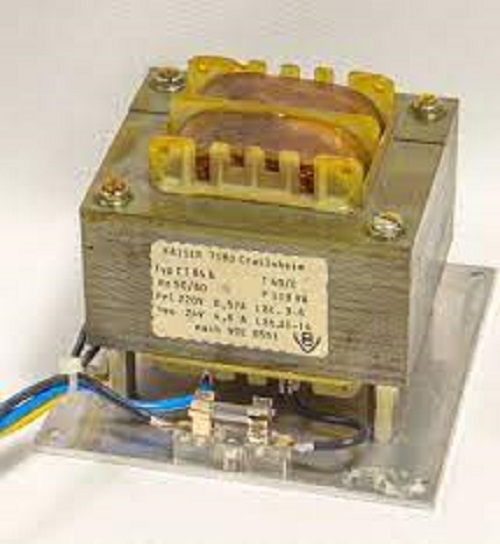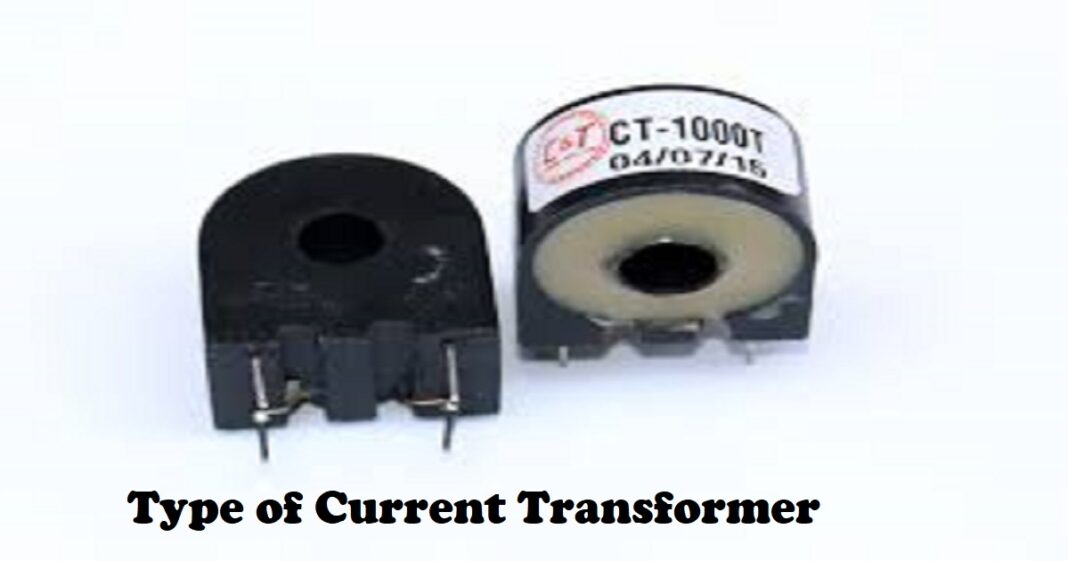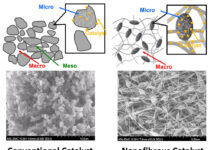What is a Transformer
A transformer is an electromechanical device that is used to transfer electrical energy between two or more AC-circuits through electromagnetic induction. A changing current in the transformer’s primary winding creates a magnetic flux in the transformer’s core, which induces a voltage in the transformer’s secondary winding.
A transformer actually converts alternating current (AC) from one voltage level to another (by stepping up or stepping down) without changing the frequency due to which alternating voltage increases or decreases in the power applications.They can be categorized as step-up or step-down voltages by connecting the transformer coils differently.
Static means that transformers don’t have any moving parts, and they are ideal for transforming AC electrical power at very high or very low frequencies. You will find transformers in almost every electronic device like computers, TVs, etc. These devices need AC power at low voltage and high current for their functioning, but the power available from the mains is high voltage and low current.
The transformer consists of two windings named as primary and secondary windings which are sheathed around an iron rod called a transformer core. When an alternating current (AC) flows through the primary winding, it produces a magnetic flux around the transformer core proportional to the number of turns in the secondary coil.
This article provides complete information and a guideline to the readers about how current transformers work, their different types, characteristics, their applications in industry, and their installation process.
What is a Current Transformer?
A current transformer (CT) is a type of device used to produce alternating current (AC) in a secondary coil in proportion to AC in the primary coil. It is constructed on the mechanism to produce current in its secondary coil proportional to the current flowing in the primary coil. CTs are used in various applications, including electrical engineering, power system protection, and energy management. Current transformers are typically made of high permeability steel to enable them to carry large flux densities with a low magnetizing current. In addition, current transformers are often equipped with auxiliary windings that can be used for exciting current measurements or other purposes.
Current Transformer Types
The main principle of the current transformer is to measure alternating current (AC). They come in various sizes and shapes and can be used in both high and low-voltage applications. The most common type of current transformer is the ring core transformer. It consists of a magnetic material ring (usually iron) with both primary winding and the secondary winding wrapped around it. This type of transformer is used in many applications, including power distribution systems and electric meters. Another common type of current transformer is the toroidal transformer. It consists of a circular(oval) – shaped magnetic material ring on which primary winding is wrapped. The secondary winding is wrapped around the ring, but it is not magnetically linked to the primary winding. Toroidal transformers are more efficient than ring core transformers, but they are also more expensive. Current transformers are an essential part of many electrical systems, and they come in a variety of shapes and sizes to meet the needs of different applications.
Wound type Current Transformer:
This type of transformer is the most commonly used in those electrical circuits having different voltage levels. It consists of a primary conductor carrying the total load current and a secondary winding wound around the primary conductor. The secondary winding is usually made of thin copper wire, and it has a much larger number of turns than the primary winding. This design allows the transformer to produce a much larger output than the input voltage. When used in an electrical system, the wound-type current transformer accurately measures the current flowing through the primary conductor.
Toroidal Current Transformer
A toroidal current transformer is a portable device used to measure alternating current. It is made by winding a conductor around a ring-shaped core. Primary winding connects with the power source, and the secondary winding connects with a meter. The advantage of a toroidal current transformer is that it is less bulky and more portable than other current transformers. In addition, anyone can use this transformer with twisted-pair cables, which reduces electromagnetic interference.
Bar-type Current Transformer
A bar-type current transformer, there is a bus-bar of the main circuit which is used as a primary winding for single turn, it is also used for protective relaying in various electrical applications. It offers many advantages over the older style wound current transformer, including a lower profile and smaller footprint, lighter weight, and no risk of loose and damaged windings. Additionally, bar-type current transformers are less likely to produce errors due to flux leakage, making them more accurate than their predecessors. As technology evolves, bar-type current transformers are becoming increasingly popular for use in both new construction and retrofit projects.
Summation Current Transformer
A summation current transformer is the one that is used to measure the sum of multiple currents. It is typically used in applications where it is necessary to monitor the total current flowing through a circuit or system, such as in a substation or power plant. It consists of a primary winding together with a secondary winding. The number of turns in the primary winding equals the number of turns in the secondary winding times the number of currents to be measured. A meter connects with the secondary winding that measures the total current flowing through the primary winding. Summation current transformers are available in various rated voltages and currents and can be custom-designed to meet specific application requirements.

Installation of Different Current Transformers
The need for different types of current transformers arises because they are used in various settings and for a variety of purposes. While some current transformers are designed for use in large industrial applications, others are intended for use in more delicate electronic equipment. As a result, it is essential to select the correct type of current transformer for the job at hand.
The first step in choosing the proper current transformer is to determine the voltage and current rating of the device. Also check the frequency range over which the transformer will be operated. Keeping in view all these factors, it is easier to select a transformer over a wide range of transformers available on the market.
The next step is installing the device, you choose according to the instructions given by the manufacturer. In most cases, this will involve connecting the primary winding of the transformer to the source of AC power and the secondary winding to the load. After installation completion, testing the performance of the transformer is necessary to ensure that it provides accurate reading.
Only by following these steps can one ensure that they have installed the correct type of current transformer for their needs.
Characteristics of Current Transformers
Current transformers (CTs) are devices used to measure alternating current (AC). They are typically used in electrical distribution systems to measure large currents. CTs are also used in electronic equipment to step down high voltages. CTs consist of a primary winding and a secondary winding wound around a common iron core. The primary winding is typically connected in series in the main circuit whereas the secondary winding is typically connected to a measuring instrument, such as an ammeter. Another key factor in them is the transformation ratio, it is the number of turns in the primary winding to the number of turns in the secondary winding. For example, a CT with a primary winding consisting of 500 turns and a secondary winding with five turns has a transformation ratio of 500:5, or 100:1. It means that for every 1 amp of current flowing through the primary winding, 100 amps will flow through the secondary winding. CTs are available in various sizes and ratings to suit various applications.
Application of Current Transformers in Industry
Current transformers are devices used to change the current in a circuit so these have different applications in a number of industries. One of the most common uses for current transformers is the electrical power industry. In this industry, they are used to measure the amount of current flowing through a conductor, and they are also used to protect equipment from overcurrents. Current transformers are also used in the telecommunications industry, and they are used in a variety of other industries as well. There are many different types of current transformers, and each type has its own unique set of features and benefits.
When a current transformer is measured using a standard voltage kind of transformer, its operating principle differs slightly. It has two windings, just like a standard voltage transformer. Alternating magnetic flux can be created when AC is supplied throughout the primary portion, and then AC will be stimulated throughout the secondary section.
Conclusion
There are many different types of current transformers available on the market, each with advantages and disadvantages. In order to choose the proper transformer for your needs, it is essential to understand the different types and how they differ. No matter which type of current transformer you choose, do your research and select a model that will meet your needs and expectations.




